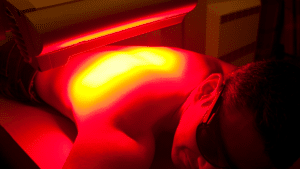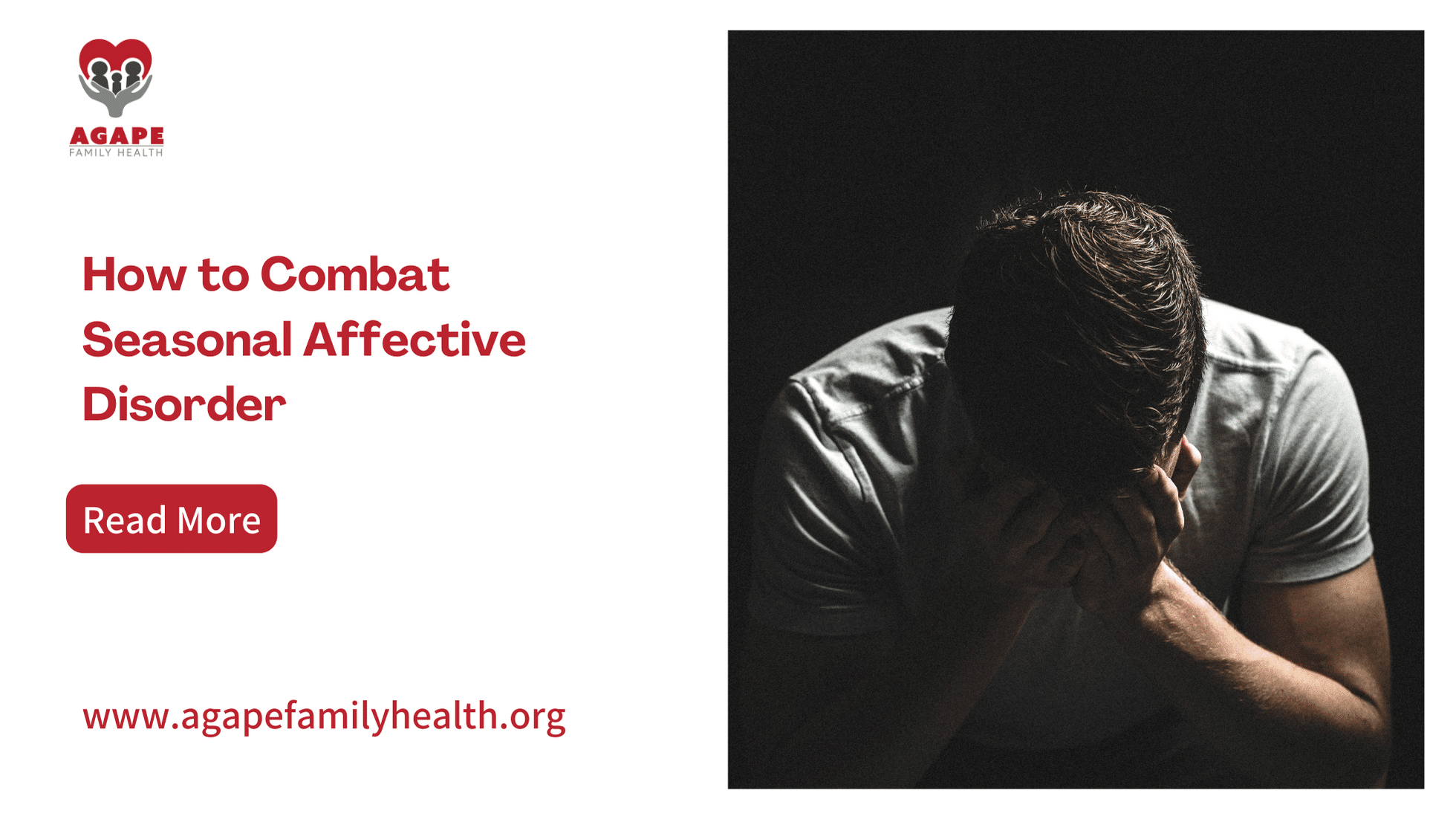As the days grow shorter, the temperature drops, and the world outside takes on a frosty demeanor, millions of people, particularly women, find themselves grappling with a recurring foe: Seasonal Affective Disorder (SAD). This seasonal form of depression casts a shadow over fall and winter, sapping energy, triggering irritability, and diminishing the sparkle of everyday life. But fear not, for within this challenge lies a solution. In this article, we will explore the depths of SAD, dissecting its causes and symptoms, and unveil a treasure trove of effective strategies.
What is Seasonal Affective Disorder?
SAD is a form of depression characterized by its recurrent pattern, typically occurring during the late fall and winter months, although it can affect some individuals during the spring and early summer as well. While the precise cause of SAD remains a subject of ongoing research, it is widely believed to be influenced by a combination of factors, each playing a role in the onset and development of this condition.
Reduced Sunlight Exposure

One of the primary factors associated with the onset of SAD is reduced exposure to natural sunlight during the fall and winter months. This reduction in sunlight hours can have several profound effects on the body. Sunlight is crucial for regulating our internal body clock, or circadian rhythm. Exposure to natural light helps synchronize the body’s daily rhythms, including the production of key neurotransmitters like serotonin and melatonin.
Serotonin, often referred to as the “feel-good” neurotransmitter, plays a crucial role in regulating mood, and lower levels of sunlight can lead to reduced serotonin production. This drop in serotonin levels is linked to feelings of sadness and a persistent low mood, which are hallmark symptoms of SAD.
Conversely, reduced sunlight exposure can lead to an overproduction of melatonin, a hormone that induces sleepiness. As a result, individuals with SAD may experience disruptions in their sleep patterns, with an increased need for sleep and difficulty waking up in the morning. These disturbances in the sleep-wake cycle further contribute to feelings of fatigue and low energy levels commonly associated with SAD.
Biological Factors
Research suggests that genetics may also play a significant role in predisposing some individuals to SAD. There is evidence to suggest that people with a family history of mood disorders, such as depression or bipolar disorder, may be at an increased risk of developing SAD. While the genetic mechanisms underlying SAD are not fully understood, it is clear that genetic factors can contribute to an individual’s vulnerability to this condition.
Hormonal Changes
Hormonal fluctuations, particularly in women, can be another contributing factor to the development of SAD. The menstrual cycle, pregnancy, and menopause can all influence hormone levels and, in turn, mood. The interplay between hormonal changes and neurotransmitter regulation is complex, but it underscores the importance of hormonal factors in mood disturbances.
Common Symptoms of Seasonal Affective Disorder
Recognizing the symptoms of SAD is essential for early intervention and effective management of the condition. Some of the common signs and symptoms of SAD include:
- Persistent Low Mood: Individuals with SAD often experience prolonged periods of sadness or depression during the seasonal shifts, which can significantly impact their daily lives.
- Loss of Interest in Activities: A reduced interest in and enjoyment of once-pleasurable activities is a characteristic symptom of SAD, often leading to social withdrawal and isolation.
- Increased Appetite and Weight Gain: SAD is often associated with cravings for high-carbohydrate, comfort foods, leading to weight gain during the affected seasons.
- Fatigue and Low Energy Levels: Individuals with SAD commonly report feeling fatigued, lethargic, and having reduced energy levels, making it challenging to maintain their usual routines.
- Irritability and Difficulty Concentrating: Mood swings, irritability, and difficulty concentrating are common cognitive symptoms of SAD, affecting both work and personal life.
- Oversleeping and Difficulty Waking Up: Increased sleep duration, along with the difficulty in waking up in the morning, is characteristic of SAD-related sleep disturbances.
How to Combat Seasonal Affective Disorder
Light Therapy (Phototherapy)

- Light therapy involves exposure to a bright light source that mimics natural sunlight. This therapy is designed to compensate for the reduced sunlight during the darker months of the year.
- How it works: Light therapy helps regulate your body’s internal clock, also known as the circadian rhythm, which controls various biological functions, including sleep-wake cycles and mood regulation.
- Benefits: By using a lightbox for a specific duration each day, you can improve your mood, increase alertness, and reduce SAD symptoms. Many individuals find relief within a few days to a few weeks.
- Consult a healthcare professional: It’s crucial to consult a healthcare provider before starting light therapy. They can recommend the appropriate intensity, duration, and timing for your sessions to ensure both safety and effectiveness.
Regular Exercise
- Engaging in regular physical activity is a powerful tool in combating SAD. Exercise has been shown to boost mood, reduce stress, and improve overall mental well-being.
- Aim for consistency: Strive for at least 30 minutes of moderate-intensity exercise most days of the week. Choose activities you enjoy, such as brisk walking, dancing, swimming, or yoga, to make exercise a sustainable and enjoyable habit.
- Outdoor exercise: Whenever possible, take your physical activities outdoors during daylight hours to maximize exposure to natural light.
Nutrient-Rich Diet

- Proper nutrition plays a significant role in mood regulation and overall mental health. A balanced diet can have a positive impact on SAD symptoms.
- Focus on whole foods: Consume a diet rich in whole grains, fruits, vegetables, lean proteins, and healthy fats. Avoid excessive consumption of processed or sugary foods, which can lead to energy fluctuations and mood swings.
- Omega-3 fatty acids: Incorporate foods rich in Omega-3 fatty acids, such as fatty fish (e.g., salmon, mackerel), walnuts, flaxseeds, and chia seeds. These fats have been associated with reducing depression symptoms.
Cognitive Behavioral Therapy (CBT)
- CBT is a highly effective therapy that focuses on identifying and challenging negative thought patterns and behaviors associated with SAD.
- Work with a therapist: Consider consulting a mental health professional experienced in CBT. They can guide you through sessions designed to help you develop coping strategies, manage stress, and change thought patterns contributing to SAD symptoms.
- Medication: In cases of severe SAD or when other treatments are ineffective, medication may be recommended by a healthcare provider. Antidepressants, particularly selective serotonin reuptake inhibitors (SSRIs), are commonly prescribed to manage SAD symptoms. They can help regulate serotonin levels in the brain and improve mood.
Create a Supportive Environment
- Building a support network and fostering a positive environment are essential for managing SAD effectively.
- Communicate openly: Share your feelings and experiences with trusted friends and family members. Let them know how they can support you during the challenging seasons.
- Seek professional help: Don’t hesitate to consult a mental health professional if your symptoms become overwhelming or if you need guidance in managing SAD. They can provide personalized treatment plans and strategies tailored to your needs.



